Jerzy Plebanski, Andrzej Krasinski052185623X, 9780521856232
Table of contents :
Cover……Page 1
Half-title……Page 3
Title……Page 5
Copyright……Page 6
Contents……Page 7
Figures……Page 15
The scope of this text……Page 19
Acknowledgements……Page 21
1.2 Space and inertia in Newtonian physics……Page 23
1.3 Newton’s theory and the orbits of planets……Page 24
1.4 The basic assumptions of general relativity……Page 26
Part I Elements of differential geometry……Page 29
2.1 Constructing parallel straight lines in a flat space……Page 31
2.2 Generalisation of the notion of parallelism to curved surfaces……Page 32
3.2 Differentiable manifolds……Page 35
3.4 Contravariant vectors……Page 37
3.6 Tensors of second rank……Page 38
3.7 Tensor densities……Page 39
3.9 Algebraic properties of tensor densities……Page 40
3.10 Mappings between manifolds……Page 41
3.11 The Levi-Civita symbol……Page 44
3.12 Multidimensional Kronecker deltas……Page 45
3.13 Examples of applications of the Levi-Civita symbol and of the multidimensional Kronecker delta……Page 46
3.14 Exercises……Page 47
4.1 Differentiation of tensors……Page 48
4.2 Axioms of the covariant derivative……Page 50
4.3 A field of bases on a manifold and scalar components of tensors……Page 51
4.4 The affine connection……Page 52
4.5 The explicit formula for the covariant derivative of tensor density fields……Page 53
4.6 Exercises……Page 54
5.1 Parallel transport……Page 55
5.2 Geodesic lines……Page 56
5.3 Exercises……Page 57
6.1 The commutator of second covariant derivatives……Page 58
6.2 The commutator of directional covariant derivatives……Page 60
6.3 The relation between curvature and parallel transport……Page 61
6.4 Covariantly constant fields of vector bases……Page 65
6.6 Parallel transport in a flat manifold……Page 66
6.7 Geodesic deviation……Page 67
6.8 Algebraic and differential identities obeyed by the curvature tensor……Page 68
6.9 Exercises……Page 69
7.1 The metric tensor……Page 70
7.3 The signature of a metric, degenerate metrics……Page 71
7.5 The curvature of a Riemann space……Page 73
7.6 Flat Riemann spaces……Page 74
7.8 Flat Riemann spaces that are globally non-Euclidean……Page 75
7.9 The Riemann curvature versus the normal curvature of a surface……Page 76
7.10 The geodesic line as the line of extremal distance……Page 77
7.12 Conformally related Riemann spaces……Page 78
7.13 Conformal curvature……Page 80
7.14 Timelike, null and spacelike intervals in a 4-dimensional spacetime……Page 83
7.15 Embeddings of Riemann spaces in Riemann spaces of higher dimension……Page 85
7.16 The Petrov classification……Page 92
7.17 Exercises……Page 94
8.1 Symmetry transformations……Page 96
8.2 The Killing equations……Page 97
8.3 The connection between generators and the invariance transformations……Page 99
8.4 Finding the Killing vector fields……Page 100
8.5 Invariance of other tensor fields……Page 101
8.6 The Lie derivative……Page 102
8.8 Surface-forming vector fields……Page 103
8.9 Spherically symmetric 4-dimensional Riemann spaces……Page 104
8.10 * Conformal Killing fields and their finite basis……Page 108
8.11 * The maximal dimension of an invariance group……Page 111
8.12 Exercises……Page 113
9.1 The basis of differential forms……Page 116
9.2 The connection forms……Page 117
9.3 The Riemann tensor……Page 118
9.5 Exercises……Page 120
10.1 The Bianchi classification of 3-dimensional Lie algebras……Page 121
10.2 The dimension of the group versus the dimension of the orbit……Page 126
10.4 Groups acting transitively, homogeneous spaces……Page 127
10.5 Invariant vector fields……Page 128
10.6 The metrics of the Bianchi-type spacetimes……Page 130
10.7 The isotropic Bianchi-type (Robertson–Walker) spacetimes……Page 131
10.8 Exercises……Page 134
11.1 What is a spinor?……Page 135
11.2 Translating spinors to tensors and vice versa……Page 136
11.4 The Petrov classification in the spinor representation……Page 138
11.5 The Weyl spinor represented as a 3×3 complex matrix……Page 139
11.6 The equivalence of the Penrose classes to the Petrov classes……Page 141
11.7 The Petrov classification by the Debever method……Page 142
11.8 Exercises……Page 144
Part II The theory of gravitation……Page 145
12.2 Local inertial frames……Page 147
12.3 Trajectories of free motion in Einstein’s theory……Page 148
12.4 Special relativity versus gravitation theory……Page 151
12.6 Sources of the gravitational field……Page 152
12.7 The Einstein equations……Page 153
12.8 Hilbert’s derivation of the Einstein equations……Page 154
12.11 The Newtonian limit of Einstein’s equations……Page 158
12.12 Examples of sources in the Einstein equations: perfect fluid and dust……Page 162
12.13 Equations of motion of a perfect fluid……Page 165
12.14 The cosmological constant……Page 166
12.15 An example of an exact solution of Einstein’s equations: a Bianchi type I spacetime with dust source……Page 167
12.16.1 The Brans–Dicke theory……Page 171
12.16.4 The Einstein–Cartan theory……Page 172
12.17 Matching solutions of Einstein’s equations……Page 173
12.18 The weak-field approximation to general relativity……Page 176
12.19 Exercises……Page 182
13.2 The covariant form of the Maxwell equations……Page 183
13.3 The energy-momentum tensor of an electromagnetic field……Page 184
13.4 The Einstein–Maxwell equations……Page 185
13.6 * The Kaluza–Klein theory……Page 186
13.7 Exercises……Page 189
14.1 The curvature coordinates……Page 190
14.3 Spherically symmetric electromagnetic field in vacuum……Page 194
14.4 The Schwarzschild and Reissner–Nordström solutions……Page 195
14.5 Orbits of planets in the gravitational field of the Sun……Page 198
14.6 Deflection of light rays in the Schwarzschild field……Page 205
14.7 Measuring the deflection of light rays……Page 208
14.8 Gravitational lenses……Page 211
14.9 The spurious singularity of the Schwarzschild solution at r = 2m……Page 213
14.10 * Embedding the Schwarzschild spacetime in a flat Riemannian space……Page 218
14.11 Interpretation of the spurious singularity at r = 2m; black holes……Page 222
14.12 The Schwarzschild solution in other coordinate systems……Page 224
14.13 The equation of hydrostatic equilibrium……Page 225
14.14 The ‘interior Schwarzschild solution’……Page 228
14.15 * The maximal analytic extension of the Reissner–Nordström solution……Page 229
14.16 * Motion of particles in the Reissner–Nordström spacetime with e < m……Page 239
14.17 Exercises……Page 241
15.1 Motion of a continuous medium in Newtonian mechanics……Page 244
15.2 Motion of a continuous medium in relativistic mechanics……Page 246
15.3 The equations of evolution of and ˙u; the Raychaudhuri equation……Page 250
15.4 Singularities and singularity theorems……Page 252
15.5 Relativistic thermodynamics……Page 253
15.6 Exercises……Page 256
16.1 A continuous medium as a model of the Universe……Page 257
16.2.1 The geometric optics approximation……Page 259
16.2.2 The redshift……Page 261
16.3 The optical tensors……Page 262
16.4 The apparent horizon……Page 264
16.5 * The double-null tetrad……Page 265
16.6 * The Goldberg–Sachs theorem……Page 267
16.7.1 The area distance……Page 275
16.7.2 The reciprocity theorem……Page 278
16.7.3 Other observable quantities……Page 281
16.8 Exercises……Page 282
17.1 The Robertson–Walker metrics as models of the Universe……Page 283
17.2.1 The redshift……Page 285
17.2.3 Number counts……Page 287
17.3 The Friedmann equations and the critical density……Page 288
17.4 The Friedmann solutions with Lambda = 0……Page 291
17.4.1 The redshift–distance relation in the Lambda = 0 Friedmann models……Page 292
17.5 The Newtonian cosmology……Page 293
17.6 The Friedmann solutions with the cosmological constant……Page 295
17.7 Horizons in the Robertson–Walker models……Page 299
17.8 The inflationary models and the ‘problems’ they solved……Page 304
17.9 The value of the cosmological constant……Page 308
17.10 The ‘history of the Universe’……Page 309
17.11 Invariant definitions of the Robertson–Walker models……Page 312
17.12 Different representations of the R–W metrics……Page 313
17.13 Exercises……Page 315
18.2 The spherically symmetric inhomogeneous models……Page 316
18.3 The Lemaître–Tolman model……Page 318
18.4 Conditions of regularity at the centre……Page 322
18.5 Formation of voids in the Universe……Page 323
18.6 Formation of other structures in the Universe……Page 325
18.6.1 Density to density evolution……Page 326
18.6.2 Velocity to density evolution……Page 328
18.6.3 Velocity to velocity evolution……Page 330
18.7 The influence of cosmic expansion on planetary orbits……Page 331
18.8 * Apparent horizons in the L–T model……Page 333
18.9 * Black holes in the evolving Universe……Page 338
18.10 * Shell crossings and necks/wormholes……Page 343
18.11 The redshift……Page 350
18.12 The influence of inhomogeneities in matter distribution on the cosmic microwave background radiation……Page 352
18.14 * General properties of the Big Bang/Big Crunch singularities in the L–T model……Page 354
18.15 * Extending the L–T spacetime through a shell crossing singularity……Page 359
18.16 * Singularities and cosmic censorship……Page 361
18.17 Solving the ‘horizon problem’ without inflation……Page 369
18.18 * The evolution of R(t,M) versus the evolution of p(t M)……Page 370
18.19 * Increasing and decreasing density perturbations……Page 371
18.20.2 Strange or non-intuitive properties of the L–T model……Page 375
18.20.4 An ‘in one ear and out the other’ Universe……Page 379
18.20.5 A ‘string of beads’ Universe……Page 381
18.20.8 General results related to the L–T models……Page 384
18.21 Exercises……Page 385
19.1 The plane- and hyperbolically symmetric spacetimes……Page 389
19.3.1 Integrals of the field equations……Page 391
19.3.2 Matching the charged dust metric to the Reissner–Nordström metric……Page 397
19.3.3 Prevention of the Big Crunch singularity by electric charge……Page 399
19.3.4 * Charged dust in curvature and mass-curvature coordinates……Page 401
19.3.5 Regularity conditions at the centre……Page 404
19.3.6 * Shell crossings in charged dust……Page 405
19.4 The Datt–Ruban solution……Page 406
19.5 The Szekeres–Szafron family of solutions……Page 409
19.5.1 The Beta = 0 subfamily……Page 410
19.5.2 The Beta………Page 414
19.5.3 Interpretation of the Szekeres–Szafron coordinates……Page 416
19.5.4 Common properties of the two subfamilies……Page 418
19.5.5 * The invariant definitions of the Szekeres–Szafron metrics……Page 419
19.6.1 The Beta = 0 subfamily……Page 421
19.6.2 The Beta = 0 subfamily……Page 422
19.6.3 * The Beta = 0 family as a limit of the Beta………Page 423
19.7.1 Basic physical restrictions……Page 425
19.7.2 The significance of Epsilon……Page 426
19.7.3 Conditions of regularity at the origin……Page 429
19.7.4 Shell crossings……Page 432
19.7.5 Regular maxima and minima……Page 435
19.7.6 The apparent horizons……Page 436
19.7.7 Szekeres wormholes and their properties……Page 440
19.7.8 The mass-dipole……Page 441
19.8 * The Goode–Wainwright representation of the Szekeres solutions……Page 443
19.9.1 The Szafron–Wainwright model……Page 448
19.9.2 The toroidal Universe of Senin……Page 450
19.10 * The discarded case in (19.103)–(19.112)……Page 453
19.11 Exercises……Page 457
20.1 The Kerr–Schild metrics……Page 460
20.2 The derivation of the Kerr solution by the original method……Page 463
20.3 Basic properties……Page 469
20.4 * Derivation of the Kerr metric by Carter’s method – from the separability of the Klein–Gordon equation……Page 474
20.5 The event horizons and the stationary limit hypersurfaces……Page 481
20.6 General geodesics……Page 486
20.7 Geodesics in the equatorial plane……Page 488
20.8 * The maximal analytic extension of the Kerr spacetime……Page 497
20.9 * The Penrose process……Page 508
20.10 Stationary–axisymmetric spacetimes and locally nonrotating observers……Page 509
20.11 * Ellipsoidal spacetimes……Page 512
20.12 A Newtonian analogue of the Kerr solution……Page 515
20.13 A source of the Kerr field?……Page 516
20.14 Exercises……Page 517
21 Subjects omitted from this book……Page 520
References……Page 523
Index……Page 540
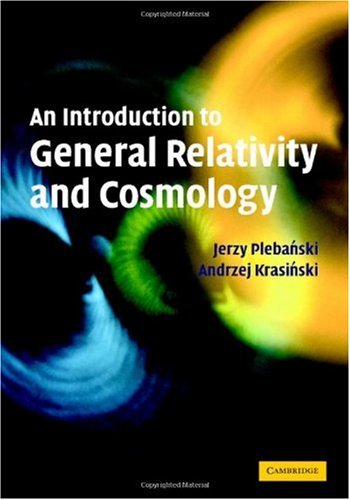
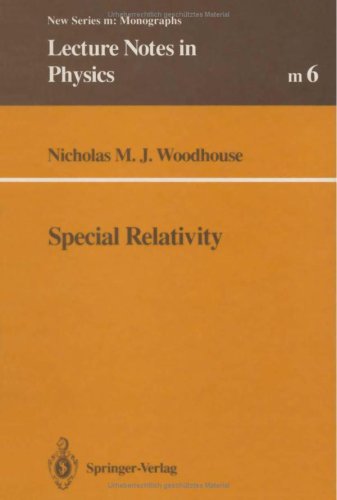
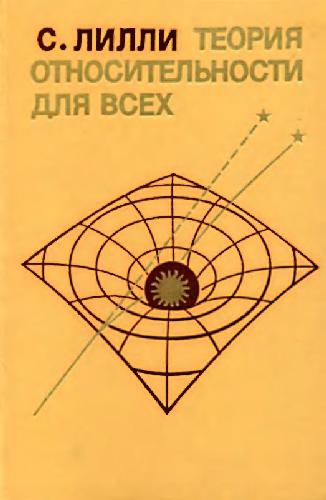
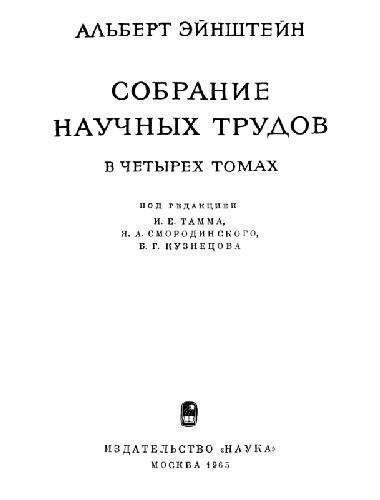
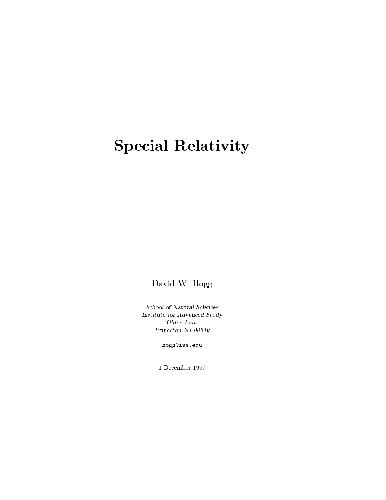
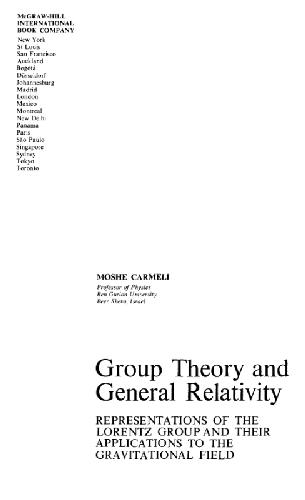

Reviews
There are no reviews yet.